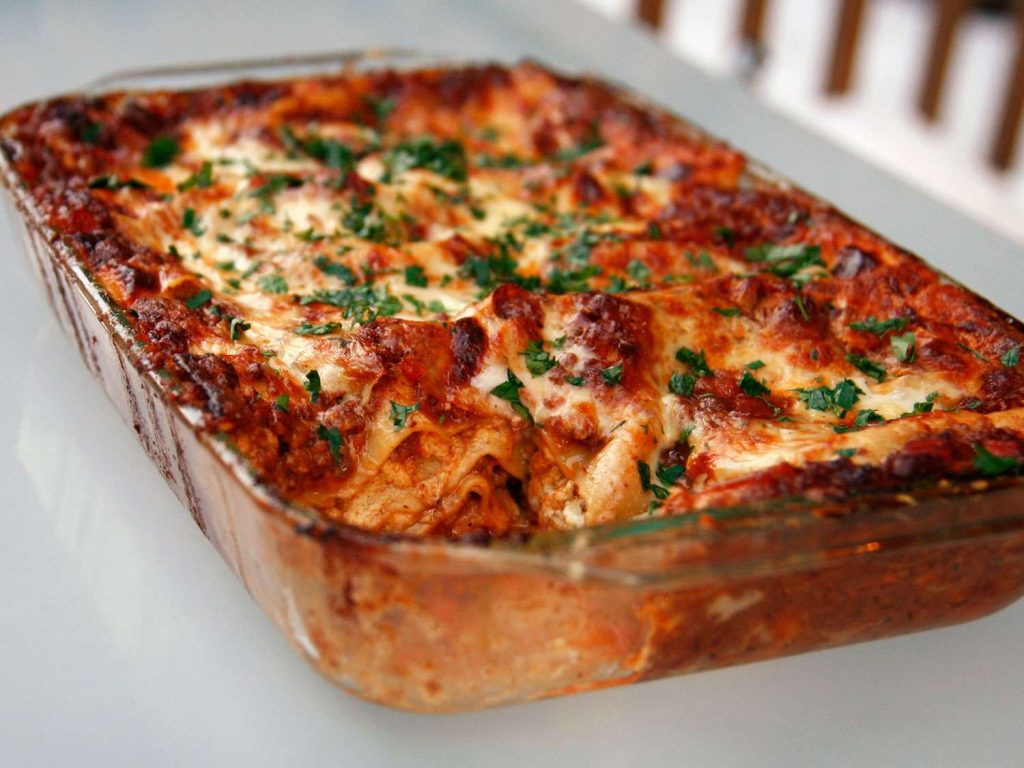Introduction to Italy’s Pasta Traditions and Regional Differences
Italy is a country where food is deeply intertwined with cultural identity, and nowhere is this more apparent than in the culinary tradition of pasta. Pasta is more than just a food in Italy; it is a symbol of regional pride, a representation of history, and a central feature of Italian family life. With its origins tracing back to ancient civilizations, pasta has become one of the most recognizable aspects of Italian cuisine, but its preparation and consumption vary significantly from region to region.
Each region of Italy has its own distinct approach to pasta, influenced by local ingredients, historical influences, and the availability of specific products. From the rich, hearty pastas of the north to the lighter, more delicate pastas of the south, pasta is as diverse as the country itself. The shape, sauce, and even the method of cooking can tell you a lot about where a dish originates.
This regional diversity in pasta not only reflects Italy’s varied geography but also its rich cultural history. For example, pasta in the south of Italy is often made with durum wheat semolina, resulting in a firmer texture, while in the north, softer pastas made from refined flour are more common. These differences, however, are not just about ingredients; they are about local customs, family traditions, and social structures. Pasta is a dish that binds families and communities together, and it is a food that tells the story of Italy’s diverse regional identities.
Famous Pasta Dishes and Their Cultural Significance
Italy boasts an incredible array of pasta dishes, many of which are renowned around the world. Each dish carries its own cultural significance and is emblematic of the region it hails from. Here are a few of Italy’s most famous pasta dishes and the cultural narratives they represent.
- Lasagna
Lasagna is one of Italy’s most beloved pasta dishes and a classic example of how pasta can reflect regional identity. Originating from the Emilia-Romagna region, specifically Bologna, lasagna is a hearty dish made with layers of wide, flat pasta sheets, rich meat sauce (ragù), béchamel sauce, and cheese. In Bologna, this dish is often referred to as “Lasagna alla Bolognese,” and it is a symbol of the region’s rich culinary heritage.
The dish’s origins trace back to ancient Roman times, but it was in Bologna that lasagna became the iconic dish it is today. Lasagna is often served during special occasions, such as family gatherings, holidays, and celebrations. In Italy, sharing a plate of lasagna is not just about eating; it is about gathering family and friends around the table and celebrating the bonds that unite people.
- Carbonara
A staple of Roman cuisine, Spaghetti alla Carbonara is one of Italy’s most famous pasta dishes. This simple yet flavorful dish is made with pasta, eggs, Pecorino Romano cheese, guanciale (cured pork cheek), and black pepper. The origins of Carbonara are somewhat debated, but it is most commonly linked to the Lazio region, with Rome as its epicenter.
Carbonara is a dish rooted in the spirit of Roman home cooking, where simple ingredients are combined to create a rich and comforting meal. The history of Carbonara is often associated with the post-World War II era, when American soldiers brought bacon to Italy, which was then incorporated into the traditional Italian recipe. Carbonara is a symbol of Roman culinary ingenuity, taking minimal ingredients and transforming them into something delicious and universally adored.
- Pasta al Pesto
Pesto pasta, especially Pasta al Pesto alla Genovese, hails from the region of Liguria, specifically the city of Genoa. The star of this dish is the vibrant green sauce made from basil, pine nuts, garlic, Parmesan cheese, and olive oil. Pesto represents the Ligurian love for fresh, local ingredients and their mastery of combining flavors.
Pasta al pesto is a reflection of the Mediterranean diet, emphasizing fresh herbs and quality olive oil. The dish has become synonymous with Liguria, and its simplicity showcases the beauty of Italian cooking. Pesto pasta is often served with short pasta shapes like trofie or trenette, which are perfect for holding onto the aromatic sauce. The dish is a reminder of the importance of fresh ingredients in Italian cuisine and the regional pride that comes with showcasing local produce.
- Orecchiette with Broccoli Rabe
Orecchiette con Cime di Rapa is a beloved pasta dish from Puglia, in southern Italy. The dish is made with orecchiette (small, ear-shaped pasta) paired with the slightly bitter broccoli rabe, anchovies, garlic, and olive oil. Orecchiette is particularly associated with the Puglia region, and the dish represents the simple, rustic cooking style of southern Italy.
This pasta dish is a reflection of the agricultural roots of the southern regions, where vegetables like broccoli rabe are common. It showcases the Italian principle of making the most out of local, seasonal ingredients. Like many southern Italian pasta dishes, Orecchiette con Cime di Rapa is simple but full of flavor, with each ingredient playing a vital role in the final dish.
- Cacio e Pepe
A quintessential Roman dish, Cacio e Pepe is a minimalist pasta made with just three ingredients: pasta, Pecorino Romano cheese, and black pepper. Despite its simplicity, the dish is full of flavor and has become a symbol of Roman culinary tradition. The name “Cacio e Pepe” translates to “cheese and pepper,” which is exactly what the dish consists of.
Cacio e Pepe is believed to have originated from Roman shepherds, who would carry Pecorino cheese and peppercorns with them while tending to their flocks. The dish is a perfect example of how Italian cuisine can transform basic ingredients into a spectacular meal. Cacio e Pepe is often made with spaghetti or tonnarelli, and its simplicity is what makes it so beloved by Italians and visitors alike.

The Social Importance of Pasta in Family and Community Meals
In Italy, pasta is much more than just a meal; it is a central part of family life and social gatherings. Pasta dishes are often served as the first course in an Italian meal, a tradition known as “primo”, and they play a key role in creating the convivial atmosphere that is characteristic of Italian dining.
Family meals are a time for connection, and pasta is often the dish that brings people together. In many regions of Italy, families gather around the table on Sundays or during holidays to share large, multi-course meals that include pasta as a central dish. Whether it’s a simple plate of spaghetti or a labor-intensive lasagna, pasta is a symbol of family bonding, hospitality, and tradition.
Pasta also plays a role in local festivals and community events. Many towns in Italy have annual pasta festivals, where local pasta dishes are showcased and celebrated. These festivals bring communities together to honor their culinary heritage and celebrate the traditions that make their region unique. The preparation of pasta, whether it’s making the dough by hand or cooking the perfect sauce, is often passed down through generations, creating a sense of continuity and pride.
Best Places to Experience Authentic Pasta Dishes: Rome, Bologna, Naples
Italy is home to countless pasta dishes, but there are some cities where you can experience the full spectrum of pasta traditions in all their glory. Three of the best cities to visit for authentic pasta experiences are Rome, Bologna, and Naples.
- Rome
Rome is a city steeped in history, and its pasta dishes are a reflection of its rich culinary past. Dishes like Spaghetti alla Carbonara, Cacio e Pepe, and Amatriciana are iconic Roman recipes that you can’t miss. Rome is also home to numerous trattorias and family-run restaurants where pasta is made fresh daily. The social aspect of dining in Rome is palpable, with locals and tourists alike enjoying a plate of pasta in bustling piazzas and cozy restaurants.
- Bologna
Known as the capital of Italian food, Bologna is the birthplace of some of Italy’s most famous pasta dishes, including Lasagna alla Bolognese and Tagliatelle al Ragù. Bologna is a food lover’s paradise, and pasta plays a central role in its culinary offerings. The city’s food markets, such as the Mercato di Mezzo, offer a chance to sample fresh pasta and local specialties.
- Naples
Naples, the birthplace of pizza, is also home to incredible pasta dishes, such as Spaghetti alle Vongole (spaghetti with clams) and Linguine alle Cozze (linguine with mussels). The city’s coastal location means that seafood pasta dishes are particularly popular, and you can find them at nearly every trattoria and pizzeria. Naples is a vibrant city where pasta is celebrated as part of the region’s culinary heritage.
Tips for Enjoying Pasta Like a Local in Italy
- Respect the Tradition of “Primo”: In Italy, pasta is typically served as the first course. Don’t rush through it—enjoy it slowly, savoring every bite. The idea is to indulge in the flavors and enjoy the moment with family and friends.
- Choose the Right Pasta Shape: Different pasta shapes are meant to be paired with specific sauces. For example, long pasta like spaghetti is great with lighter sauces, while shorter pasta like rigatoni is perfect for hearty, meat-based sauces.
- Avoid Overcooked Pasta: Italians prefer their pasta al dente, meaning firm to the bite. Overcooked pasta is considered a sign of poor preparation, so aim for that perfect bite!
- Pair Pasta with Local Wines: Italy is home to many fantastic wines that pair perfectly with pasta dishes. In Rome, enjoy a glass of Frascati with your pasta; in Bologna, opt for a glass of Lambrusco to complement the richness of ragù.
- Don’t Forget the Olive Oil: In Italy, olive oil is used liberally, not just for cooking but also as a finishing touch. Drizzle some good-quality olive oil on your pasta before eating to enhance the flavors.
Conclusion
Pasta is much more than a food in Italy—it is a cultural cornerstone that reflects the diversity and regional identities of the country. From the hearty lasagna of Bologna to the simple yet flavorful Carbonara of Rome, pasta is a symbol of Italy’s deep culinary heritage. Each dish tells a story, from the ingredients to the method of preparation, and reflects the social importance of food in Italian life. Whether you are in Rome, Bologna, or Naples, pasta connects you to the heart of Italian culture, and experiencing it firsthand is an unforgettable journey into Italy’s culinary traditions.





















